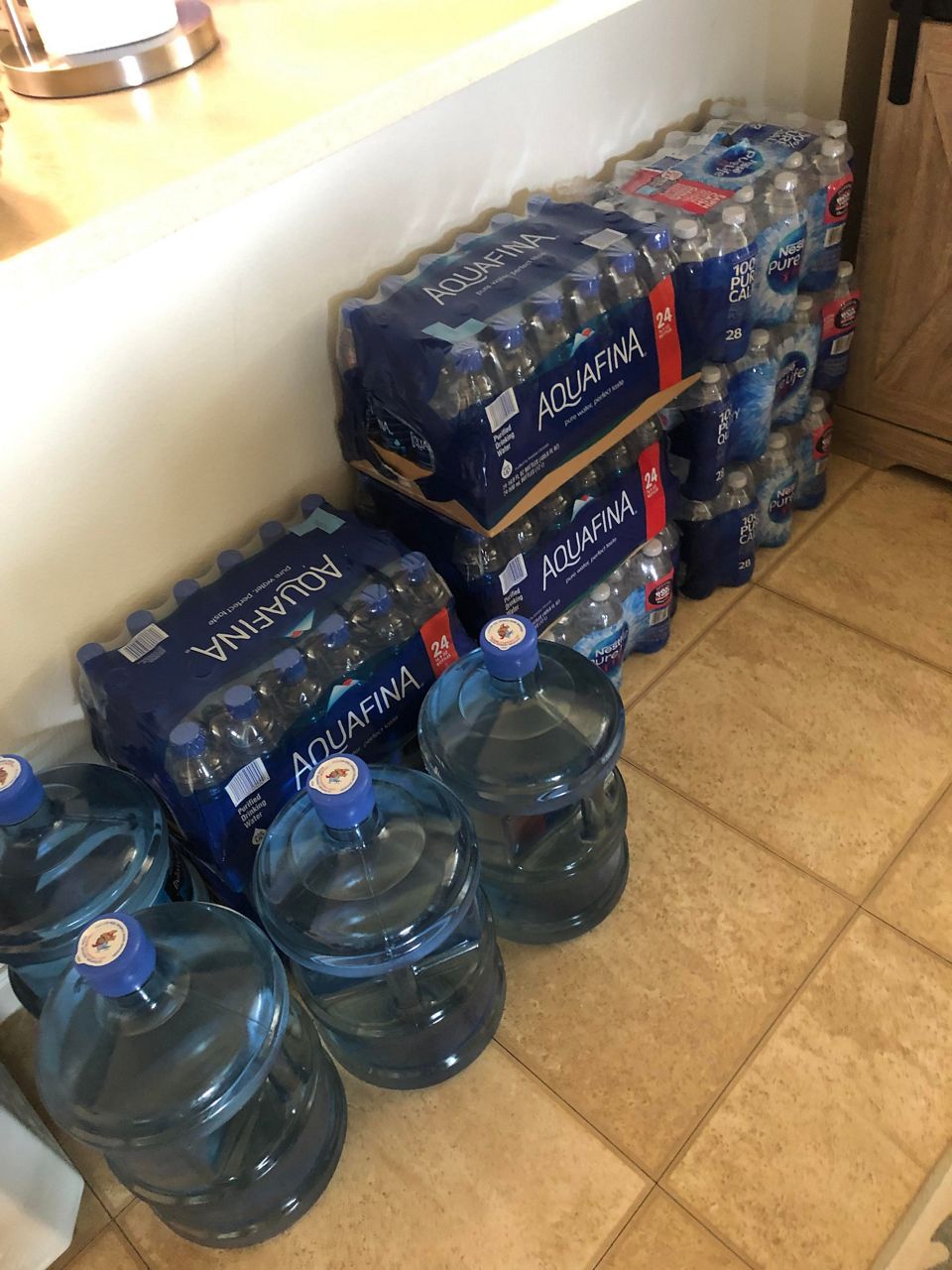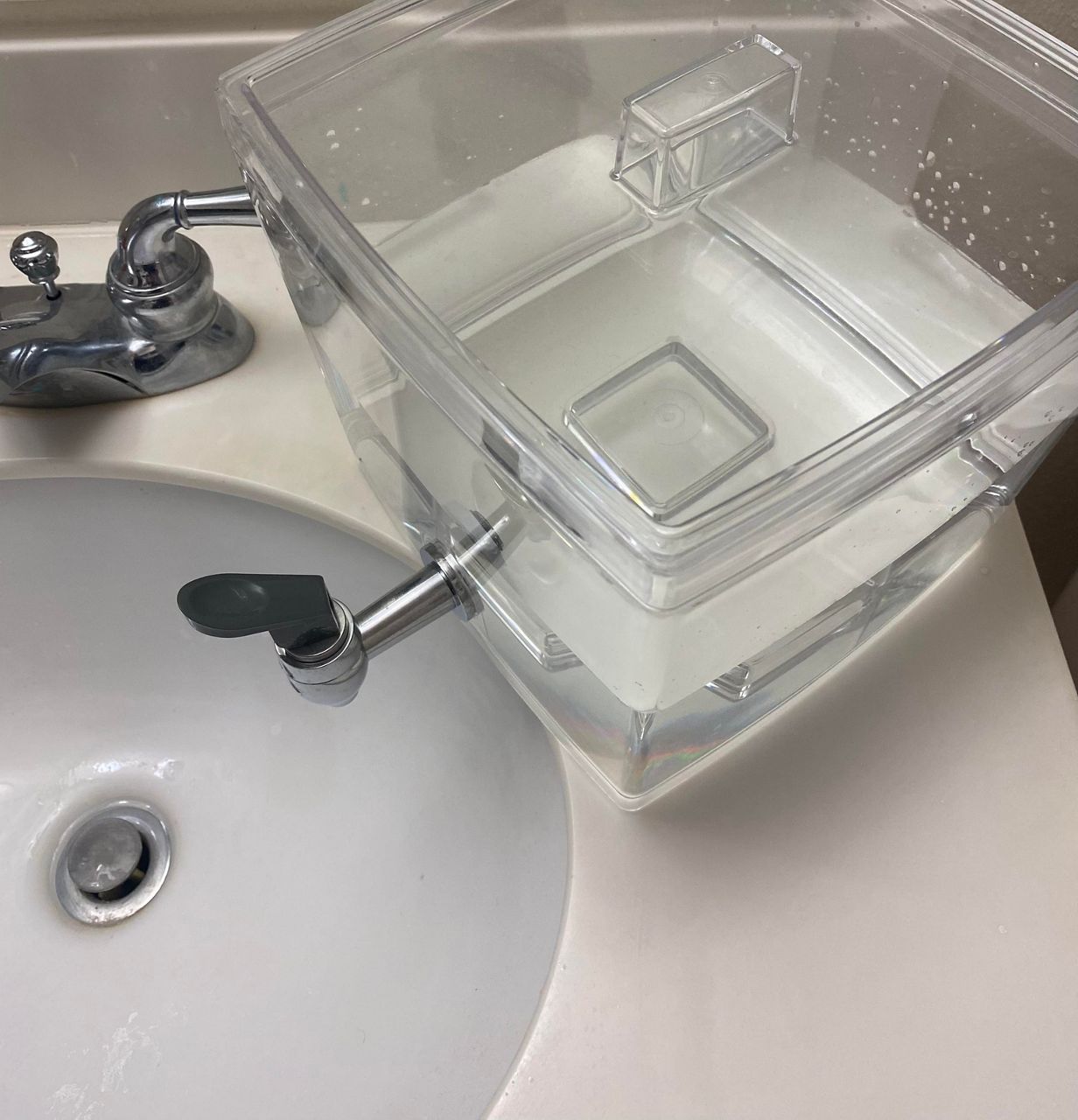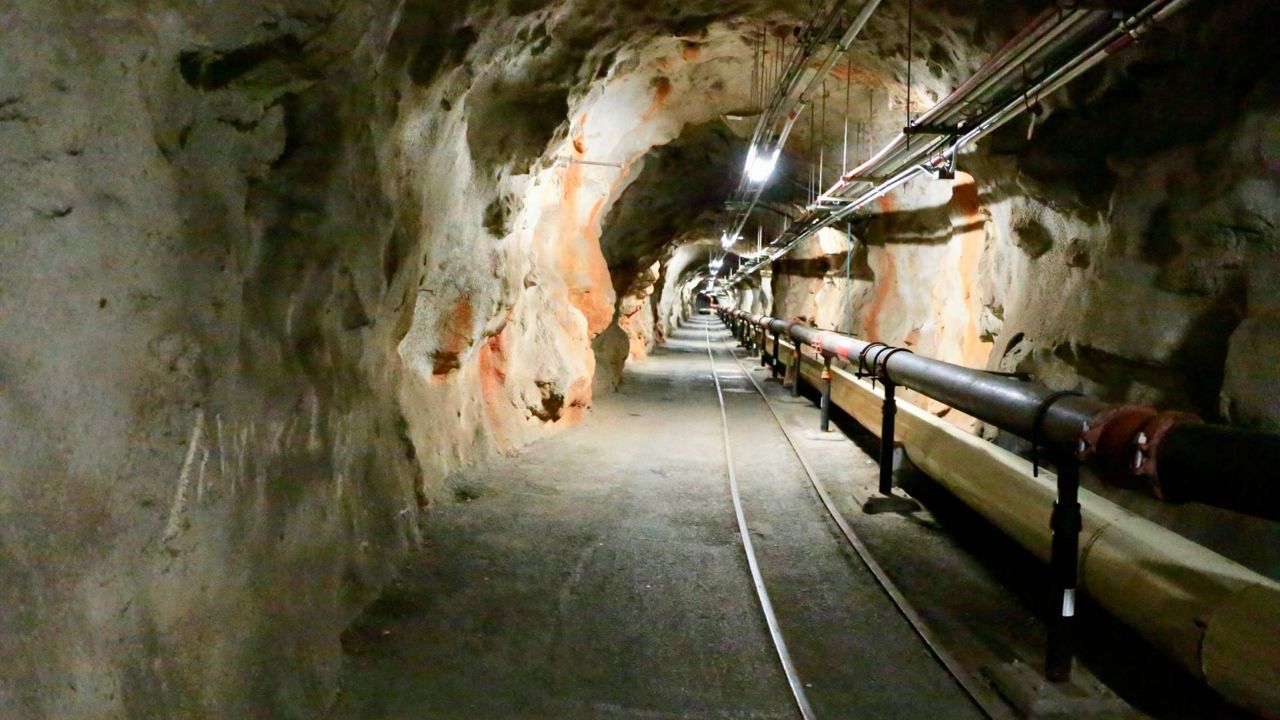HONOLULU — Over the past week, people living and working around Joint Base Pearl Harbor-Hickam have reported the smell of gasoline, and many people complained that they, their children and pets have experienced physical symptoms, including rashes, vomiting, headaches, nausea and hair loss. They are also working on adjusting to life without using tap water.
The U.S. Navy confirmed Thursday that water samples taken from the Red Hill well tested positive for petroleum hydrocarbons, adding that the well has been isolated since Sunday.
Military housing near the Joint Pearl Harbor-Hickam Base uses the Navy’s water system, impacting Catlin Park, Halsey Terrace, Radford Terrace, Doris Miller, Moanalua Terrace, Ohana Nui and others. Red Hill and Nimitz Elementary Schools also stopped using their water after smelling a gasoline-like odor.
Hanna Rippetue, who lives in Halsey Terrace and is a mother to two girls, said her five-year-old daughter had a rash starting last Friday, and her three-year-old daughter had a stomachache for about four days last week. She didn’t realize it was from the water until the local news reported Sunday that people in the neighborhood were complaining of the smell coming from the water.
“You don’t expect your water to be the reason your kids don’t feel well,” she said.
Rippetue is married to an Army Captain, but they chose to move into Navy housing in August because they liked the size of the house and appreciated that there was no wall sharing. She already suffers from chronic psoriasis — an autoimmune condition — and arthritis and said she has been experiencing headaches, nausea and fatigue for many days now.
“We feel slightly better since stopping the water use from the tap, but I still am having headaches and nausea throughout the day,” she said.

“My dog is sick and vomiting and we just spent $400 at the vet getting her seen and diagnosed,” Rippetue added. The vet told her it was most likely petroleum ingestion causing her symptoms. “She’s still without her appetite.”
Cyndi Gomez, an Army veteran, said Saturday after showering that her hair started falling out in “massive amounts.” She lives in Skyview, which is part of army housing and is the mother of one child. She also works for an active duty member as a full-time caregiver for his three children. Gomez said the children’s symptoms have included a skin rash, eye irritation while showering, and that they have all experienced nausea and headaches.
Bonnie Russell, who has lived for more than three years at Catlin Park and has four children, said the first indication there was a problem was over the weekend when her 12-year-old son had a rash on his hands and feet, but she didn’t realize at first that it was from the contaminated water.
Russell, whose husband has been in the Navy for 17 years, said she didn’t notice the fuel smell until Sunday morning when she turned on the tap to wash her hands. “It smelled like gasoline was coming out of my sink,” she said. “It’s gotten worse,” she added about the odor. “If you put some in a glass jar and let it sit for a while, there’s a little, tiny bit of clear oil on top.”
After noticing the smell, she went with her family to buy bottled water. Since then, she has gone to a friend’s home in Ewa to fill up water bottles and use their shower.
While the Navy is directing residents to use the gym showers on base, Russell said she would not try to use them because she is concerned that the water is part of the same system, that there will be long lines, and that she will have to send her young children into sex-segregated showers where she won’t be able to supervise. She hopes to go to her friend’s house again to shower, but in the meantime is boiling water on the stove and took a “shower with a water jug in the bathroom.”
Russell has shared water with her neighbors, some of which are unable to physically carry or lift heavy items on their own. "I know a lot of families in my neighborhood are worried about the lack of ability for people who need accessible water," said Russell. "The lack of ability for people to have accessible showers if they have disabilities."
Ashley Maria’s husband has been in the Navy for 17 years, and while her family doesn’t live in Navy housing, she sends her three-year-old daughter to a child care facility, called Peltier Child Development Center, which is in Halsey Terrace. She said she first heard about the odor in the water from the local news — not from the center.
Since her daughter is too young to be vaccinated for COVID-19, she was particularly worried about how the child center would continue with cleanliness protocols. Usually, the young children are asked to wash their hands thoroughly throughout the day.
“Now, if they’re not able to wash their hands, I’m not sure what’s going to happen,” she said.
After several phone calls to the child center, Maria said they told her they are using bottled water for drinking — besides flushing the toilets — and they’re using hand sanitizers and wipes. For food and dishes, Peltier told her they are getting it from another center that’s not in the same area.
“I think they’re doing the right steps — that’s all I needed to know … but the fact that I had to go out and hunt for these answers that’s where my concern is,” Maria added.
John Bobruk, who has worked as an Operations Limited Duty Officer with the U.S. Navy for 13 years and lives in Halsey Terrace, said his family has had to get accustomed to not using the water. He said they bathe “Japanese style” in the potable water provided by the Navy, meaning that “the entire family uses the same bath.”

“We all wipe down prior to entering to keep the water mostly clean,” he added. “Kids first, then my wife and I go last.”
Audrey Lamagna, whose husband has been in the Navy for nine years and currently lives in Moanalua Terrace, said she first read Saturday on Facebook that some of her neighbors were complaining the water smelled “like insecticides or fuel,” so she filled a tub from her kitchen tap and noticed that it smelled like fuel too.
Over the weekend, before smelling the odor, she noticed that whenever she washed her 14-month-old daughter’s pacifier and gave it to her, she would refuse it. “She never refuses her pacifier,” said Lamagna, who suspected her baby could tell that it was different.
After Sunday’s discovery, she stopped using the tap water and started using water they saved for a hurricane emergency to take “camping-like sponge baths.”
Lamagna says to minimize washing dishes with bottled water, they have mostly been getting takeout and using disposable dishes. “Just so we’re not wasting the clean water we do have,” said Lamagna. “But that’s a lot of money out of our pockets.” Plus, she still has to wash her 2-year-old’s sippy cup in a dishpan with bottled water.
She said she has been hesitant to pick up the potable water now being provided by the Navy because she doesn’t know the source of the water. "They're not being transparent on whether or not it's from the same waterline or a different waterline,” said Lamagna referring to the Navy’s water source.
Like Russell, Lamagna also went to a friend’s house to do laundry and shower Monday. “I don’t feel comfortable using the gym showers because I have two young children.” She also expressed concern that the Navy never clarified whether the water was contaminated at the gym showers, which is the same reason she has rejected the Navy’s potable water. “We’ve been taking sponge baths as best as we can.”
On Tuesday, the Navy asked residents to flush the water in their homes for five minutes in order to remove residual contaminants.
"We did flush the water," said Lamagna. "However, the fumes coming out of the faucet were just too strong — regardless of ventilation."
The U.S. Navy water system is used by as many as 100,000 residents, according to Hawaii’s U.S. Rep Kai Kahele, who called the situation “a crisis of astronomical proportions” at a hearing of the Housed Armed Service Committee on Thursday. He also questioned whether the U.S. Navy’s Red Hill Underground Fuel Storage facility was safe to continue to use to store fuel.
While it’s not conclusive that the contamination comes from the U.S. Navy’s Red Hill Underground Storage Facility, there have been many questions surrounding whether it came from this source. During the 1940s, the U.S. Navy constructed 20 steel tanks that are as large as a 25-story building to store fuel under a mountain ridge now known as Red Hill, and originally called Kapukaki.
On Nov. 20, 2021, a 14,000-gallon mixture of water and fuel spilled from a pipeline connected to the lower tunnel of the facility. On Monday, the commander of the U.S. Pacific Fleet, Adm. Samuel Paparo, called for an investigation into the spill.
Russell, the mother of four who lives in Catlin Park, called the Navy’s response “dismissive and rude,” saying they have been slow to acknowledge the water contamination. “They’re telling us to be patient — it’s been since Sunday.”
“I don’t like that the Navy is trying to pretend it’s not an issue,” Russell added.
Bobruk, the father and Limited Duty Officer, said he thought “it was important to focus on how we resolve the issue for now and not how things were handled in the beginning.” He encouraged the focus to stay on restoring clean water and taking actions to prevent it in the future.
Gomez, the Army vet who is a mother of four children, said she found the Navy’s messaging unacceptable and compared it to “talking to a wall.” Instead, she said she appreciates that the Army has provided help, including setting up a family assistance center where free food has been provided.
Lamagna, the mother of two who lives at Moanalua Terrace, called the Navy’s response “very shitty.” She mentioned the Joint Base Pearl Harbor-Hickam commander, Captain Erik Spitzer, sent a letter to people associated with the Joint Base Pearl Harbor-Hickam base that was "dismissive." The email sent Monday said, "I can tell you at this point that there are no immediate indications that the water is not safe. My staff and I are drinking the water on base this morning." She called this “gaslighting.”
The U.S. Navy confirmed on Thursday that the Red Hill well tested positive for petroleum hydrocarbons, and it said another test done by the Navy confirmed vapors, which is an additional sign of petroleum hydrocarbons.
The Department of Health said Wednesday that preliminary samples tested at a University of Hawaii lab had showed signs of a petroleum product. Samples were sent to a lab in California for further testing.
The Navy said it is now working on developing a plan to restore the potable water system to standards that would comply with the Environmental Protection Agency. It was also working to figure out how the containment got into the well and how to fix the well.




